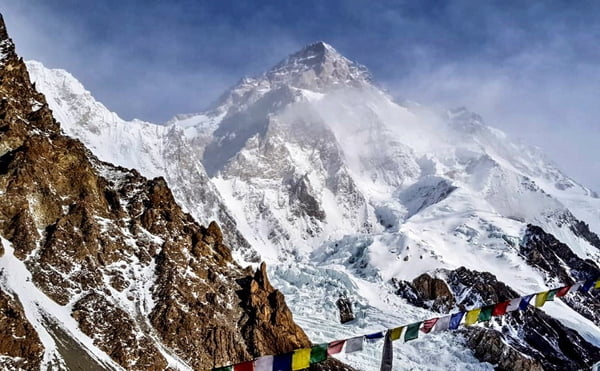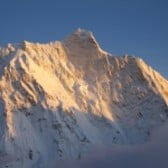
Daily Mountain
48 years, Australia
Winter K2 Preview: Between Mountain Excellence and Commercialization
This article first appeared on http://explorersweb.com. The original can be read here.
Winter K2 has become the great unsolved problem of the Himalaya. As such, it has caught the attention of those wishing to “conquer” the ultimate prize. Whether this is positive or not will likely depend on how the challenge is tackled. For the moment, nothing is confirmed, but the expeditions bound for winter Chogori couldn’t be more different in their approach, style and priorities.
 K2 in winter. Photo: Alex Txikon
K2 in winter. Photo: Alex Txikon
Yesterday, news broke that Denis Urubko is considering doing K2 in winter — after Broad Peak! Then, in a shocking postscript, Urubko added that Winter K2 will be the grand finale of his illustrious high-altitude career. After K2, he will focus totally on rock climbing.
Broad Peak in winter is a serious matter for Urubko, since he considers that the 2013 ascent by Maciej Berbeka, Tomasz Kowalski, Adam Bielecki and Artur Małek cannot be considered a “real winter” summit. Urubko follows the meteorological calendar rather than the solar calendar we’re most familiar with. The meteorological calendar states that winter ends on February 29, so winter climbs must be completed before March 1.
Urubko says that he will probably team up with Canadian Don Bowie, at least for Broad Peak (ExplorersWeb has asked Bowie’s team for confirmation). Then, if he has enough time and “the right climbing mate”, Urubko will proceed to K2.
Fresh from his remarkable new solo route on Gasherbrum II last month, and acclaimed as one of the best Himalayan climbers ever, Denis Urubko is definitely the right guy for such a formidable task as Winter K2. He may not be alone, though — and some of his Base Camp neighbours may not be the regular tough cookies.
First, Adam Bielecki is currently recovering from a broken heel and is out of the equation.
Rising star Nirmal Purja has also announced long-range plans for Winter K2 and gained kudos from his assurance that he will not use supplementary oxygen. However, Purja is currently focused on completing all the 8,000’ers within a single year, so Winter K2 will not happen until at least next year for him. In all likelihood, his commitment will depend on whether someone else snags the prize this year.
Surprisingly, Alex Txikon has just revealed that he will skip this season too. It’s not about lack of funds, training or motivation, because the Basque climber has all of these, and he already has most of his equipment cached in Pakistan. But he admits that he is put off by the values, tactics and style of some of the competing teams currently gearing up for Winter K2.
“Current trends on the 8,000’ers are far from the expeditions of the past,” he said. “Now, a summit picture is all that matters, and what should be the most important is not relevant anymore.”
Txikon says that during his winter expeditions, he and his mates always remained “faithful to our principles and values.” On the first winter ascent of Nanga Parbat, for example, Txikon said that it was the collaboration between teams and the stellar work of Ali Sadpara, rather than the overall competence of the expeditions, that led to their success.
“In winter, speed prevails, in contrast to the old Soviet style of resistance in high-altitude camps,” Txikon pointed out. “You must be able to withstand 40 below temperatures and extremely violent winds. The exposure and effort are extreme, and only few alpinists [are capable of] climbing K2 in winter.”
Txikon is obviously not referring to his friend Denis Urubko. But Mingma Gyalje has announced his intention to try Winter K2 as well, with John Snorri from Iceland and Gao Li from China.
Snorri climbed K2 with Mingma’s Imagine Nepal team in 2017 and previously, Ama Dablam and Lhotse. Gao Li joined Mingma’s team in 2016 for Manaslu, climbed Everest and Lhotse last year, Makalu this past spring and attempted K2.
“Depending on our funds, we will try to add two or three more Sherpas and Pakistani climbers,” Mingma Gyalje reported. Currently, the trio is “building up confidence and getting to know each other,” on Manaslu. Whether that training will be enough remains to be seen. Although their exact plans for K2 remains vague, the climbers’ backgrounds suggests that the expedition could be O2-supplied.





